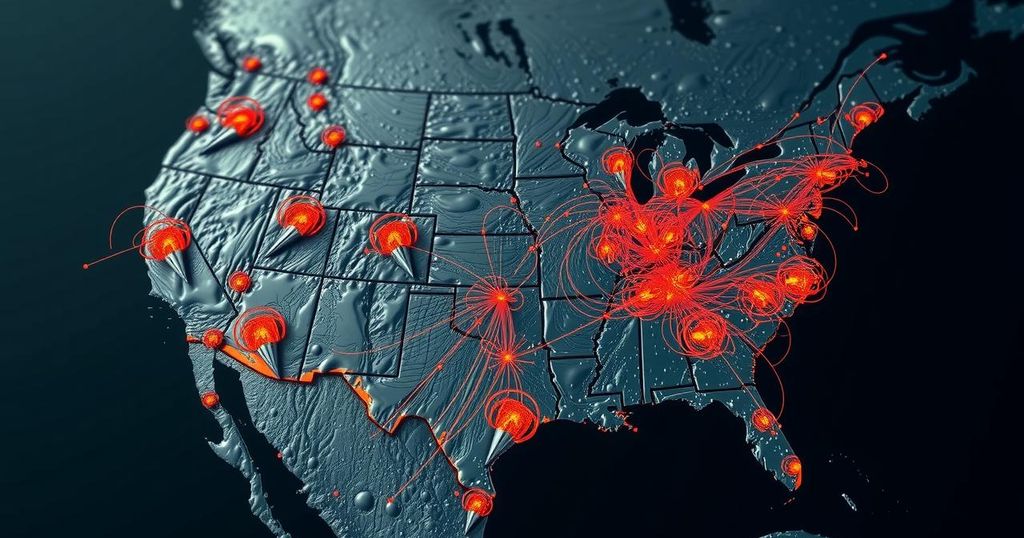A series of earthquakes including a 4.4-magnitude tremor in California on November 7, followed by significant seismic activity in regions such as Greece and Hawaii, highlights increased tectonic movements globally. The United States Geological Survey provided detailed reports on these events showcasing their depths and magnitudes, emphasizing the importance of continual monitoring.
On November 7, a 4.4-magnitude earthquake struck California, specifically at Borrego Springs, with a depth of 9.8 kilometers. The United States Geological Survey (USGS) reported that 257 individuals felt this tremor. Notably, this event followed a series of seismic activities, including a 4.4-magnitude earthquake in Greece just two days earlier on November 5, which had a depth of 82.3 kilometers, and a 4.8-magnitude quake in Hawaii on the same day, centered in Pāhala at a depth of 38.4 kilometers. Earlier, on November 4, California experienced a 3.3-magnitude earthquake in Anza at a depth of 12.1 kilometers. Multiple quakes occurred on November 3, including a 4.3-magnitude earthquake near La Serena, Chile. Furthermore, a 3.7-magnitude quake was detected in Steele, Missouri. A 5.3-magnitude earthquake in Greece on November 3 also preceded these events. This pattern continued with a notable 6.0-magnitude earthquake in Oregon on October 30, centered in Windsor, along with other minor quakes in California within the same week. The seismic activity underscores an increased occurrence of earthquakes, particularly in regions prone to tectonic movements. The interconnected nature of these seismic events highlights the importance of monitoring tectonic activities globally, especially as different regions can experience significant earthquakes in a short span of time. Seismologists continue to study these occurrences to better understand their implications. Over the last few weeks, California alone has reported several earthquakes, as marked by recurring information from USGS noted throughout this period. The dynamics of tectonic plates in these areas remain a critical area of study for geologists and disaster preparedness officials alike.
This report details a series of earthquakes occurring across different global regions, primarily focusing on incidents in California, Greece, Hawaii, and Chile. The increase in these seismic events sparks concern and interest among geologists and emergency response teams. Understanding the depths and magnitudes of these occurrences is essential for assessing potential risks and impacts on communities. The article provides information based on reports from the United States Geological Survey, an authoritative source dedicated to monitoring seismic activity in the United States.
The recent spate of earthquakes, particularly those reported in California, Greece, and Hawaii, signals an active period for seismic activity globally. These occurrences highlight the necessity for continual monitoring and research into tectonic movements, especially in vulnerable regions. The data provided by the United States Geological Survey plays a crucial role in enhancing public awareness and preparedness regarding earthquake risks.
Original Source: www.kfyr.com






